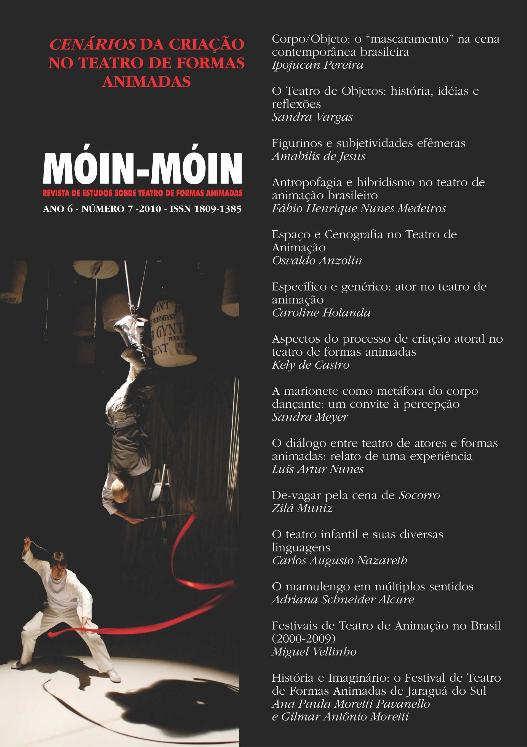O diálogo entre teatro de atores e formas animadas: relato de uma experiência
DOI:
https://doi.org/10.5965/2595034701072010144Abstract
O artigo propõe-se a relatar e refletir sobre os experimentos de Luís Artur
Nunes, essencialmente um diretor de teatro de atores, mas que inúmeras vezes introduziu formas animadas no contexto da cena atoral. Descreve suas primeiras tentativas nos espetáculos A Salamanca do Jarau, de Simões Lopes Neto, e A Fonte, Érico Veríssimo. Em seguida, relata o exercício improvisacional “Bonecos Chineses”, tal como Nunes o aprendeu num workshop com Richard Schechner nos anos 1970. A técnica utiliza a
premissa da manipulação de bonecos, mas com atores, que manipulam uns aos outros como se fossem bonequeiros com seus bonecos. Descreve seu aproveitamento como formato para a criação de cenas nos espetáculos Sarau das 9 às 11 (de Luís Artur Nunes em parceria com Caio Fernando Abreu) e A Vida Como Ela É..., de Nelson Rodrigues.
Explica também o desenvolvimento de uma variação utilizando máscaras e dinâmicas inspiradas nos tableaux-vivants e nas HQ. O artigo advoga uma cena heterogênea, híbrida, onde atores e formas animadas possam dialogar livremente numa busca da ampliação dos limites da teatralidade.
Palavras-chave: Teatro de formas animadas; diálogo entre teatro de atores e teatro de formas animadas; antiilusionismo e teatralidade explícita.
Downloads
Downloads
Published
How to Cite
Issue
Section
License
The readers are free to transfer, print and use the articles published in the Magazine, as long as there’s explicit mention to the author(s) and to Móin-Móin Magazine - Studies in Theater of Animated Forms and there are no changes on the original work. Any other use of the texts needs to be approved by the author(s) and the Magazine. In submitting an article to Móin-Móin Magazine - Studies in Theater of Animated Forms and have it approved, the author(s) agree to give away, without payments, the following rights to the Magazine: first publishing rights and the license for the Magazine to redistribute this article and its metadata to index and reference services that the editors consider appropriate.
The articles whose author(s) are identified represent the author’s point of view and not the official position of Móin-Móin Magazine. The author(s) commit to always mention the publication in the following way when publishing work in reference to the article published in Móin-Móin Magazine:
“This article was originally published by Móin-Móin Magazine volume (insert the volume), number (insert the number), in the year of (insert year) and can be accessed on: http://www.revistas.udesc.br/index.php/móin"
Plagiarism in any way constitutes an unethical publishing behavior and is unacceptable. Móin-Móin Magazine holds the right to use software or other plagiarism tracking methods to scan the submitted works.
This journal uses Creative Commons Attribution Licence– (CC BY 4.0).



